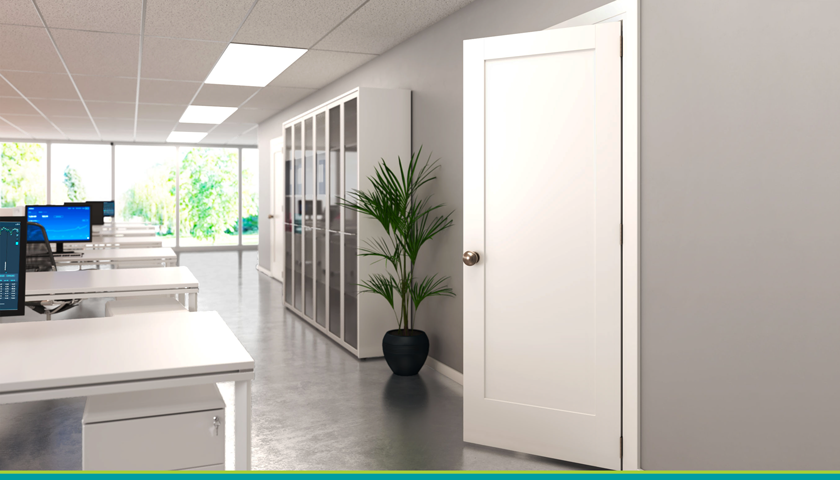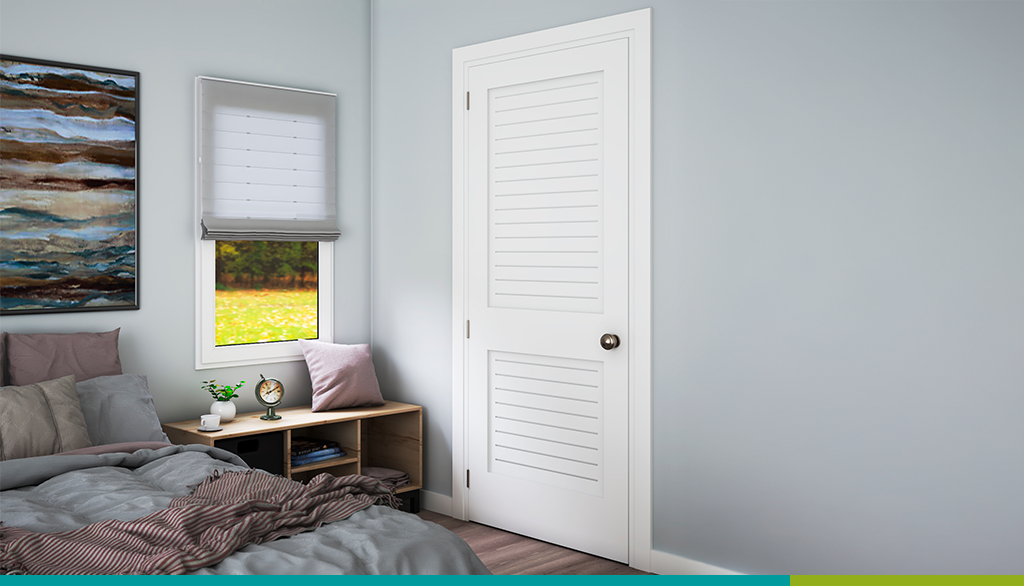People who already have white doors in their home or office may have already experienced their doors turning yellow over time. This can be very frustrating, as usually the only way to recover them to their bright white splendor is by painting them again.
Painting requires a lot of preparation and care to make sure it doesn’t end in a disastrous mess! If you don’t have the original paint, there is no guarantee that the door will return to the original white color or match the other white doors/decor in your home.
Preventative care is the best way to deter your white door from turning yellow. But before you can prevent yellowing, we first need to ask: why do white doors turn yellow? How can you prevent yellowing and ensure that your doors stay white for much longer? It all begins with the initial paint job that the door receives.
What causes yellowing?
Several factors can transform a white door into a yellow door. But without a doubt, the most significant of them, is a byproduct of either painting the doors with paint that is not suitable for wood, or from using a low quality paint.
In the case of exterior doors, exposure to weather can cause the door to discolor, especially if it does not get a lot of sun exposure or if it continually gets wet.
Wear and tear on a door is natural; besides, every part of a home eventually needs maintenance. However, it is possible to optimize the longevity, beauty and whiteness of your doors as much as possible by sourcing your door and the products you use to treat your door from a quality company with a good reputation.
Quality painting
As we have already mentioned, the first step towards promoting the longevity of your white doors begins with the paint you select.
It is very common for people to buy raw wood doors and paint them at home. In this case, the main mistake people make is that they generally use lower quality paint in order to save money.
Lower quality synthetic enamels are the classic cost-cutting paint. In addition to not being durable they can leave a strong, lingering smell in your home or office- sometimes smelling strongly for days on end. Not only do these products dry very slowly, before you know it the paint will once again begin to fade and yellow.
Painting takes time and effort, it is worth the extra money to buy good quality paint to prevent having to repaint your doors regularly.
For the doors to be white, clean and beautiful for a long time, you must know how to choose the best paint for the job. It is also essential that the painting is done by qualified professionals or someone with a lot of experience.
When doors are painted in the factory, within a controlled production environment, (ie, following high quality standards) the result is much more satisfactory and consistent than when it is done at home.
Most Eightdoors products are finished in white, getting you started on the right foot when it comes to quality, consistency of application and longevity of color. Our products arrive at your home ready to be installed, with the product’s longevity in mind.
Most Common Errors
Solvent-based paints
The most common mistake is for people to use acrylic enamels, solvent-based paint or much lower quality paints.
Ideally, you would use only synthetic enamel paints to paint wooden doors. Take care that you are getting water-based paint instead of an oil-based product. Water-based paints will not yellow as quickly as oil-based paints.
Oil-based and alkyd paints have a curing mechanism that leads to yellowing when they are not exposed to sunlight. This is an especially important consideration for your internal doors which may not receive much natural light.
In addition, it is always good to buy brand paints that are well known and trusted. Or, simply invest in doors that are already primed and painted, from a reliable and guaranteed company, like Eightdoors.
“Raw” wood
Another factor that can lead to premature yellowing is when doors are manufactured with green (unseasoned) wood.
This is wood that has not yet totally dried and is still in the process of releasing moisture. On the surface,however, the wood may appear dry but the inside of it is green. As the moisture leaves, it creates yellow spots that show up even after putting on a couple coats of white paint.
This problem can also be avoided by purchasing the doors from a reliable supplier, who respects the time it takes for wood to cure and consequently produces a high quality product for the buyer.
Environmental Factors
Other reasons that cause white doors to turn yellow are the environment in which they are installed. Lack of direct light or excessive moisture (like in a dank bathroom) can cause your door to discolor.
Exposure to ammonia or tobacco smoke can also discolor your door. White paint may is also yellow if it is installed in close proximity of a heat source like a stove or radiator.
When possible, install white doors in rooms that receive a lot of sunlight to help bleach the door to maintain its white color.
It is also important to avoid smoking, grilling, building fires, cooking or baking next to areas with white paint.
There are, of course, some environments where this is unavoidable (like in a small kitchen). In these kinds of environments, you can use primer, finish or sealant to help keep the door stay white longer.





I’m fairly sure none of the mechanisms above explain why I’ve got nasty and very visible yellow streaks in a newly repainted front door. I stripped and sanded it down to bare wood before applying primer/undercoat and gloss top coat. I suspect there’s some sort of wood treatment or preservative on those panels which the others haven’t got, and the new paint’s drawn it out of the wood. Plausible?
Leave a comment